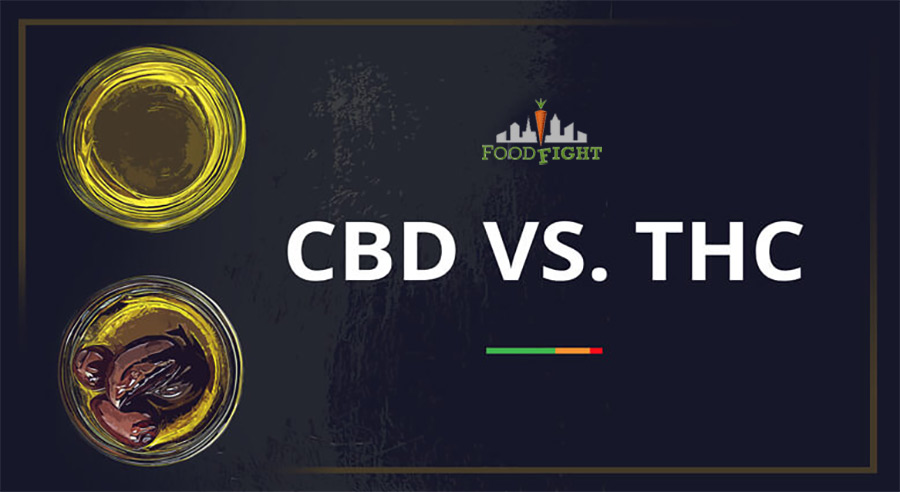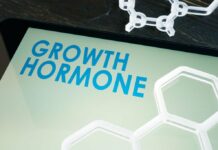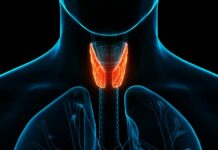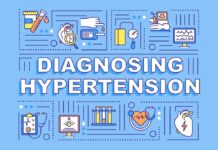Scientists have isolated a plant known as cannabis to contain more than 113 chemical compounds. Cannabinoids are naturally occurring compounds found in cannabis plants. Delta-9-tetrahydrocannabinol (THC) and cannabidiol (CBD) are the two most dominant cannabinoids found in cannabis.
All mammals have an endocannabinoid system containing the CB1 and CB2 receptors that are capable of interacting with cannabinoids.
Raphael Mechoulam, organic chemist and professor of Medicinal Chemistry at the Hebrew University of Jerusalem, first isolated THC from cannabis in 1964. A year earlier, he had elucidated CBD, which was first discovered by Dr. Roger Adams of the University of Illinois in 1940. It was in 1965 when Mechoulam first synthesized THC and CBD. [1]Pertwee, R. G. (2006, January). Cannabinoid pharmacology: the first 66 years. British Journal of Pharmacology, 147(S1), S163–S171. https://doi.org/10.1038/sj.bjp.0706406
THC has long been known as the main psychoactive compound in cannabis – and is responsible for causing people to get high. By mimicking the effects of the neurotransmitters anandamide and 2-AG in the body, THC improves the perception of pain, sleep habits, eating habits, and other bodily functions.
As for CBD, it is non-psychotropic, which means it does not make you high. Cannabidiol is found in cannabis, as well as the hemp plant. Even though cannabinoids can be found in many plant species, CBD is the only one with well-known cannabinoid content.
The chemical formula of CBD and THC is the same, but their atoms are arranged differently. This slight variance is what makes THC psychoactive and CBD non-psychoactive. Although both compounds interact with human cannabinoid receptors, they produce dramatically different effects.
The non-psychoactive nature of CBD makes it a popular ingredient in dietary and natural supplements. It does its work – symptom relief and medical potential – with little or no noticeable effect on your cognitive abilities. In fact, research has shown that CBD might be able to balance the psychotic effects of THC.
Origin and Forms of CBD and THC
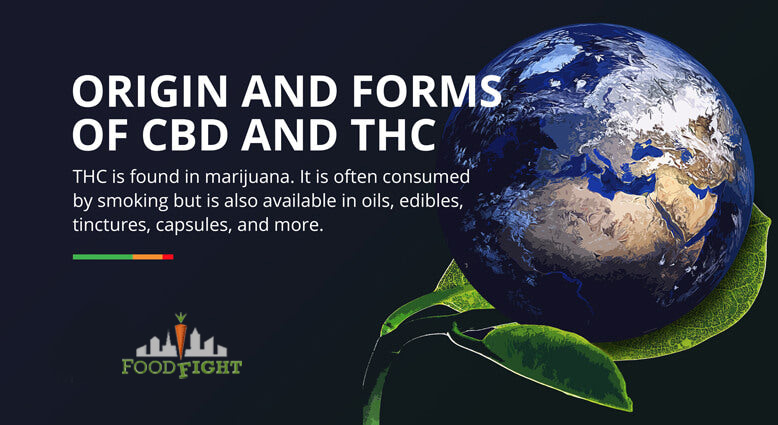
THC is found in marijuana. Smoking marijuana is the most common way to consume it, but it is also available in oils, tinctures, capsules, edibles, and other forms.
CBD is found in marijuana and hemp. It is available in oils, tinctures, soft gels, gummies, and more.
Hemp vs. Marijuana
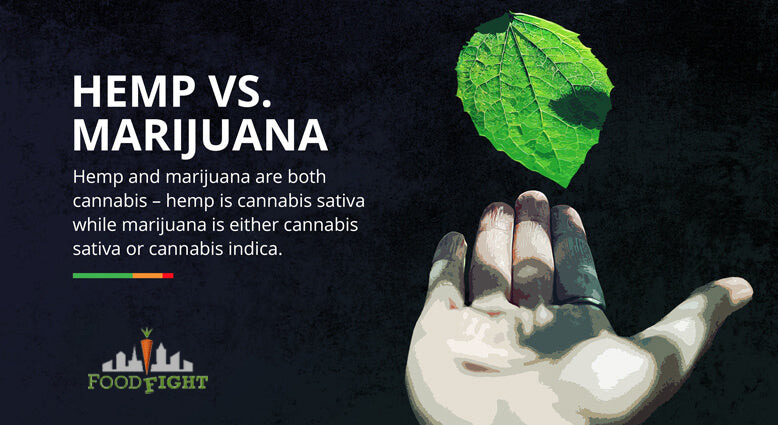
Hemp and marijuana both belong to the cannabis family – hemp belongs to the cannabis Sativa family, whereas marijuana belongs to the cannabis Sativa or indica family.
- A hemp is a legal form of cannabis containing less than 0.3% THC
- Marijuana is a legal form of cannabis containing more than 0.3% THC
CBD is the same cannabinoid whether it is found in hemp or marijuana.
CBD vs. THC: Chemical Structure
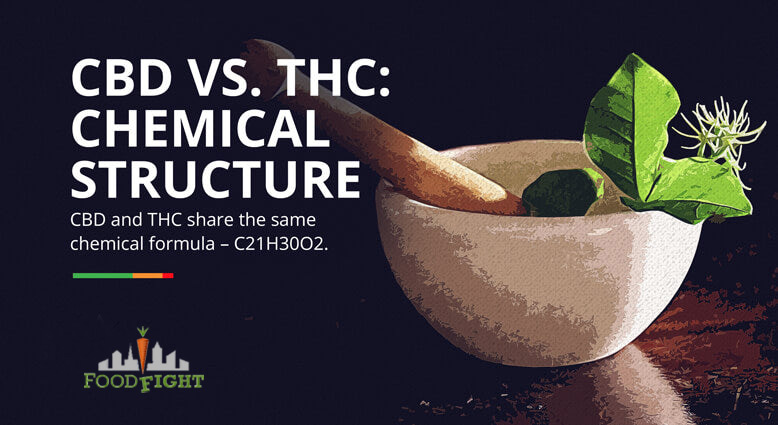
The chemical formulas of CBD and THC are the same – C21H30O2. Their molecular structures are also identical: 21 carbon atoms, 30 hydrogen atoms, and two oxygen atoms.
Both cannabinoids are produced in an identical manner in the cannabis plant. The only difference is the arrangement of the atoms. CBD has a molecular mass of 314.464 g/mol, while THC has a mass of 314.469 g/mol.
By synthase, cannabis Sativa produces cannabigerol acid (CBGA), which is then cyclized into tetrahydrocannabinolic acid (THCA) and cannabidiolic acid (CBDA) [2] Cannabigerol. Cannabigerol – an overview, ScienceDirect Topics. (n.d.). Retrieved May 19, 2022, from https://www.sciencedirect.com/topics/agricultural-and-biological-sciences/cannabigerol . Until sufficient heat is applied to cannabis Sativa extracts, they do not become psychoactive. A chemical reaction known as decarboxylation is necessary to produce the final THC and CBD compounds.
A key structural difference between THC and CBD is a cyclic ring in THC, while a hydroxyl group is in CBD. This structural difference contributes to the entirety of THC's pharmacological properties.
The solubility of THC and CBD in water is poor but good in alcohol and lipids. To ensure that THC preparations remain intact during analytical testing procedures, amber silicate glassware is typically used to store THC because it binds to glass and plastic.
How They Interact With The Endocannabinoid System
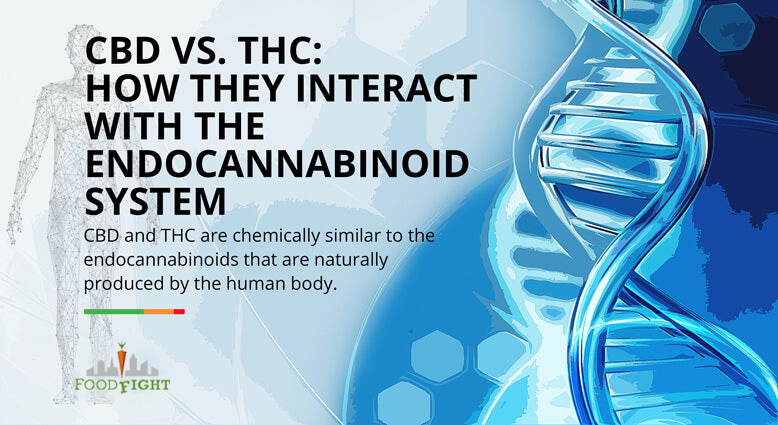
There are several similarities between CBD and THC and the endocannabinoids that the body naturally produces.
Cannabinoids interact with endocannabinoid receptors in our brains, which are responsible for cell communication and signaling. Neurotransmitters are released in the brain as a result of interaction with cannabinoids.
Human endocannabinoids are composed of two types of receptors: CB1 and CB2.
The CB1 receptor is mainly found in regions of the brain, where they play an important role in pain perception, mood regulation, memory, sleep, and appetite.
The CB2 receptors are found mostly in immune system areas. When CBD binds to these receptors, it works as an anti-inflammatory.
Cannabis is able to work directly on the skin, muscles, and any part of the body that contains cannabinoid receptors, which is why topical cannabis can be used on various parts of the body.
There are several types of endocannabinoids that our bodies release. Anandamide and arachidonoyl glycerol (2-AG) are the two main types. CBD, THC, and other endocannabinoids can also activate CB1 and CB2 receptors in our bodies.
As well as activating CB1 and CB2 receptors, THC mimics the effects of anandamide and 2-AG. CBD, however, seems to boost the body's supply of endocannabinoids instead of acting directly on them.
THC stimulates CB1 receptors in the body, which regulate appetite, relaxation, altered senses, fatigue, and hunger. As a side effect of THC, munchies – the strong craving for food – can result from marijuana use, the well-known side effects of THC.
Unlike THC, CBD does not directly influence CB1 and CB2 receptors. CBD is thought to modulate CB1 and CB2 receptors in an indirect manner, which is the reason why it is non-psychoactive.
CBD has tremendous therapeutic potential because of its ability to influence a wide range of receptors throughout the body. Moreover, CBD inhibits enzymes that break down endocannabinoids, increasing the levels of natural cannabinoids in the body. This increases the levels of endocannabinoids in the body.
The Psychoactive Components
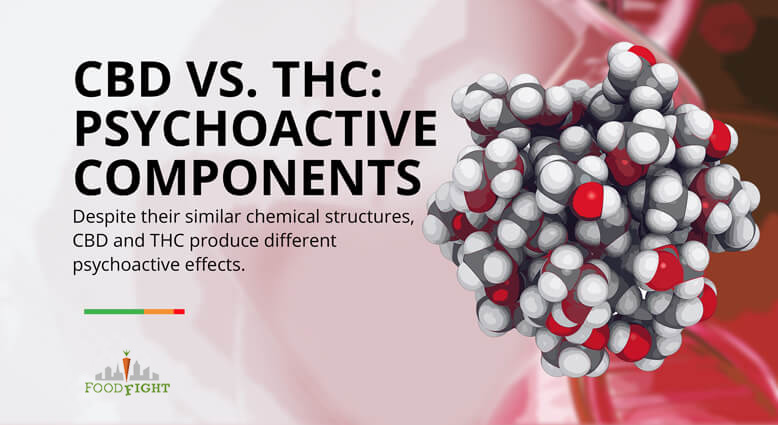
Though CBD and THC share similar chemical structures, their psychoactive effects are distinct.
It is thought that CBD may have the potential to interfere with the binding action of THC and weaken its psychoactive effects when it binds to CB1 receptors in the brain. THC binds to CB1 receptors in the brain and creates a sense of euphoria. CBD does not do this. CBD itself might interfere with the binding action of THC and weaken its psychoactive effects.
The psychoactive effects of THC make people high, which is why they are associated with recreational cannabis. CBD, however, has beneficial physiological and psychological effects that are non-intoxicating.
It has been demonstrated that CBD acts as a mild antidepressant and may have antipsychotic properties, thanks to its interactions with brain receptors. [3]Schier, A., Ribeiro, N., Coutinho, D., Machado, S., Arias-Carrion, O., Crippa, J., Zuardi, A., Nardi, A., & Silva, A. (2014b, June 12). Antidepressant-Like and Anxiolytic-Like Effects of … Continue reading [4]Waldo Zuardi, A., Alexandre S. Crippa, J., E.C. Hallak, J., Bhattacharyya, S., Atakan, Z., Martin-Santos, R., K. McGuire, P., & Silveira Guimaraes, F. (2012b, September 12). A Critical Review of … Continue reading
How They Interact With Each Other
Research indicates that CBD-rich products can be therapeutic without creating euphoria when used in combination with relatively little THC.
Since CBD binds to the CB1 receptor, it has the ability to reduce the psychotropic effects of THC. CBD can also reduce anxiety, paranoia, and short-term memory loss when used in combination with THC.
Even though there is evidence that CBD and THC interact positively, most products on the market contain only either THC or CBD.
Developing, distributing, prescribing, and regulating medications with a single active ingredient is probably easier than developing, testing, producing, or regulating medicines with more than one active ingredient.
Whole plant medicine could sway the trend, however, as evidence emerges about its “entourage effect.” Advocates of whole plant therapy contend that cannabis is best used in its purest form, which contains more than 400 trace compounds. Instead of CBD alone, whole-plant, full-spectrum cannabinoids work more efficiently on human endocannabinoid receptors.
Health Benefits of THC and CBD
CBD and THC can provide the same relief for several medical conditions. Some people may prefer to take CBD instead of THC because of the absence of euphoric side effects.
Known effects of THC:
- Analgesic: relieves pain and inflammation
- Relaxation: creates a general state of relaxation
- Drowsiness: helps induce sleep
- Appetite stimulant: creates a strong urge to eat
- Euphoria: creates a sense of high
Known effects of CBD:
- Anti-convulsant: suppresses seizure activity
- Anti-oxidant: fights the effects of free radicals
- Antipsychotic: combats psychosis
- Neuro-protective: protects and helps regenerate neurons in the brain
- Anti-emetic: reduces nausea and vomiting
- Anti-inflammatory: reduces inflammation
- Anti-tumoral: prevents tumor growth and might even help destroy cancer cells
Primary medical applications of THC:
- Pain relief
- Anxiety
- Nausea
- Muscle spasticity
- Insomnia
- Sleep apnea
- Stress disorders
- Mitigate side effects of chemotherapy, multiple sclerosis, glaucoma, AIDS, and spinal injuries
- Boost appetite
Primary medical applications of CBD:
- Inflammation
- Stress
- Seizures
- Migraines
- Nausea
- Inflammatory bowel disease
- Arthritis
- Depression
- Anxiety
- Psychosis
- Epilepsy
- Schizophrenia
- Mitigate side effects of multiple sclerosis and chemotherapy [5]https://www.cancer.gov/about-cancer/treatment/cam/hp/cannabis-pdq
In June 2018, the U.S. Food and Drug Administration (FDA) approved the Epidiolex for treating rare, difficult-to-control forms of epilepsy. It is the first prescription medication that contains CBD.
Research suggests that CBD may be a better option for treating inflammation and neuropathic pain, while THC may excel in reducing spasticity and cramp-related pain. [6]Nagarkatti, P., Pandey, R., Rieder, S. A., Hegde, V. L., & Nagarkatti, M. (2009, October). Cannabinoids as novel anti-inflammatory drugs. Future Medicinal Chemistry, 1(7), 1333–1349. … Continue reading [7]Xiong, W., Cui, T., Cheng, K., Yang, F., Chen, S. R., Willenbring, D., Guan, Y., Pan, H. L., Ren, K., Xu, Y., & Zhang, L. (2012, May 14). Cannabinoids suppress inflammatory and neuropathic pain … Continue reading [8]Bifulco, M. (2008, August). Cannabinoids in the management of spasticity associated with multiple sclerosis. Neuropsychiatric Disease and Treatment, 847. https://doi.org/10.2147/ndt.s3208
Some experts suggest that a combination of THC and CBD is the ideal method of treating pain symptoms. This validates the theory of the entourage effect. [9]Kogan, N. M., & Mechoulam, R. (2007, December 31). Cannabinoids in health and disease. Dialogues in Clinical Neuroscience, 9(4), 413–430. https://doi.org/10.31887/dcns.2007.9.4/nkogan
Do note that taking too much THC could aggravate pain symptoms. THC must be consumed in small doses when used for pain relief.
Side Effects of CBD vs. THC
Even in large doses, CBD is well tolerated in humans. According to research, any side effects from taking CBD are likely the result of cannabidiol interacting with other medications.
Its sibling, however, has immediate and long-term cognitive side effects. THC may cause impaired thinking and reasoning, altered decision-making, inability to plan and organize, and lack control over impulses. [10]Volkow, N. D., Baler, R. D., Compton, W. M., & Weiss, S. R. (2014, June 5). Adverse Health Effects of Marijuana Use. New England Journal of Medicine, 370(23), 2219–2227. … Continue reading
The psychoactive effects of THC include anxiety, panic attacks, paranoia, intensified sensory experiences, time distortion, and altered social behavior. THC overdose can have severe side effects such as agitation, psychosis, delusions, and hallucinations.
THC has also been proven to have acute and long-term negative effects on the parts of the brain that control memory and learning.
Physiologically, THC may induce increased heart rate, dizziness, dry mouth, bloodshot eyes, sedation, vomiting and nausea, coordination problems, slower reaction times, and motor impairment. Severe shaking, uneasiness, and psychotic reactions may result from ingesting too much THC and require immediate medical attention in the emergency room.
THC is potentially addictive, and long-term use can cause serious side effects on the heart, brain, and lungs. [11]Goyal, H., Awad, H. H., & Ghali, J. K. (2017, July). Role of cannabis in cardiovascular disorders. Journal of Thoracic Disease, 9(7), 2079–2092. https://doi.org/10.21037/jtd.2017.06.104
Those who smoke weed could be susceptible to constant colds, coughing, phlegm, and bronchitis. THC can compromise the immune system of the lungs with enlarged bronchial passageways and irritations of the airways, thereby increasing the risk for infection.
Marijuana intake can dramatically increase heart rate and stays elevated for around three hours. Not only will cannabis smoking speed up a heart rate by 20-100%, but it will also raise blood pressure while sitting and drop blood pressure when standing up.
Patients already suffering from hypertension, heart arrhythmia, and other cardiac diseases could feel worse after consuming marijuana.
THC addiction can also have negative social consequences, with strong cravings and seeking out marijuana.
CBD does not cause harmful cognitive effects that are associated with THC. In fact, CBD might be able to counteract the psychoactive effects of THC. [12]Niesink, R. J. M., & van Laar, M. W. (2013). Does Cannabidiol Protect Against Adverse Psychological Effects of THC? Frontiers in Psychiatry, 4. https://doi.org/10.3389/fpsyt.2013.00130
Cannabis plants that contain high THC and low CBD could cause a stronger ‘stoned' feeling. On the other hand, strains with high CBD and low THC produce a weaker, more relaxed effect.
Given the increasing popularity of medical cannabis, growers are turning their focus on creating strains that contain a higher CBD content to minimize psychoactive side effects.
Research has also shown that CBD is non-toxic and has no risk of lethal overdose.
A 2010 review on the safety and side effects of CBD showed that large doses did not affect blood pressure, body temperature, heart rate, movement, food intake, digestion, motor activity, or embryonic development. [13]Cacciola, G., Chianese, R., Chioccarelli, T., Ciaramella, V., Fasano, S., Pierantoni, R., Meccariello, R., & Cobellis, G. (2010, October 25). Cannabinoids and Reproduction: A Lasting and … Continue reading
Overall, the lower health risks of CBD combined with its high efficiency in treating various health conditions make it a better candidate for biological therapeutic applications than THC. [14]Machado Bergamaschi, M., Helena Costa Queiroz, R., Waldo Zuardi, A., & Alexandre S. Crippa, J. (2011, September 1). Safety and Side Effects of Cannabidiol, a Cannabis sativa Constituent. Current … Continue reading
Legal Status of CBD and THC
Cannabis laws in the United States are constantly evolving. Marijuana and THC are included on the list of controlled substances, so they are illegal under federal law.
However, 20 states plus Washington D.C. have legalized medical marijuana as long as a licensed physician prescribes it.
There are few states that have passed laws that make medical CBD legal. If marijuana is legal in your state, you should be able to buy CBD without issue.
CBD is also found in hemp, which is legal in all 50 states. Many companies have taken advantage of this loophole by importing high-CBD hemp extracts instead of sourcing from marijuana growers.
Before you try to buy CBD or THC, read about your state laws.
Drug Testing
It is possible for THC to be detected on a drug test, even several days or weeks after use, since cannabinoids are stored in fat cells.
THC is always detected on a screening test because most standard drug testing is able to detect chemicals associated with it. CBD may not always be detected on a drug test because some tests are sensitive to it.
Do note that industrial hemp contains less than 0.3% of THC, so there could still be some trace of the compound. You might test positive for THC even if you have not used it.
Does CBD oil contain THC?
There is a difference between marijuana and hemp in that marijuana contains more THC, and hemp contains more CBD. Because hemp contains more CBD than THC, it is the best source for extracting CBD.
CBD oil may contain small amounts of THC because THC is present in hemp plants. Typically, marijuana has an average THC content of 12 percent, while hemp is restricted to 0.3 percent.
Conclusion
Cannabis has been around for thousands of years, treating various ailments across cultures around the world. As more countries start to legalize cannabis, scientists are now beginning to unearth the vast potential of this plant and its applications in modern medicine. Restrictions and regulations, however, have slowed down and limited the pursuit of scientific research into the therapeutic effects of cannabinoids.
A report on CBD's potential clinical uses was published by the World Health Organization (WHO) in October 2017. CBD is now unequivocally proven to be effective for treating certain forms of epilepsy, including Dravet syndrome, a severe childhood epilepsy characterized by drug-resistant seizures.
Clinical and pre-clinical studies have also demonstrated that CBD has analgesic, anti-inflammatory, anxiolytic, antipsychotic, neuroprotective, hypoxia-ischemia, and anti-tumor properties. [15]Rudd, J. (2022, May 31). CBD vs THC – What are the Main Differences? Analytical Cannabis. Retrieved May 19, 2022, from … Continue reading
According to the WHO, CBD might also be beneficial to patients with Alzheimer's disease, Parkinson's disease, and Huntington's disease, as well as anxiety, depression, psychosis, multiple sclerosis, and cancer.
There are two drugs already approved by the FDA that contain THC or its synthetic counterpart.
- Dronabinol (Marinol®) is an orally administered THC capsule that is used to treat nausea and vomiting caused by chemotherapy, as well as poor appetite and weight loss among AIDS patients.
- Nabilone (Cesamet®) is able to relieve chemotherapy-related nausea and vomiting that cannot be treated with other drugs, by containing a synthetic version of THC.
A third drug – Nabiximols (Sativex®) – is currently under review in the United States. This mouth spray contains a one-to-one ratio of whole-plant THC and CBD extracts. Sativex® is already available in Canada, Australia, the United Kingdom, Spain, and 25 other countries for treating muscle spasms from multiple sclerosis and cancer pain.
CBD and THC have exhibited great potential in reducing symptoms associated with various medical conditions. Before trying hemp CBD, talk to your healthcare provider. Some drugs do not interact well with cannabinoids, so you should consider the possibility of side effects if you are currently on medication. If you do not want any of the acute and long-term adverse effects of THC, stick to CBD-rich supplements.
References
| ↑1 | Pertwee, R. G. (2006, January). Cannabinoid pharmacology: the first 66 years. British Journal of Pharmacology, 147(S1), S163–S171. https://doi.org/10.1038/sj.bjp.0706406 |
|---|---|
| ↑2 | Cannabigerol. Cannabigerol – an overview, ScienceDirect Topics. (n.d.). Retrieved May 19, 2022, from https://www.sciencedirect.com/topics/agricultural-and-biological-sciences/cannabigerol |
| ↑3 | Schier, A., Ribeiro, N., Coutinho, D., Machado, S., Arias-Carrion, O., Crippa, J., Zuardi, A., Nardi, A., & Silva, A. (2014b, June 12). Antidepressant-Like and Anxiolytic-Like Effects of Cannabidiol: A Chemical Compound of Cannabis sativa. CNS &Amp; Neurological Disorders – Drug Targets, 13(6), 953–960. https://doi.org/10.2174/1871527313666140612114838 |
| ↑4 | Waldo Zuardi, A., Alexandre S. Crippa, J., E.C. Hallak, J., Bhattacharyya, S., Atakan, Z., Martin-Santos, R., K. McGuire, P., & Silveira Guimaraes, F. (2012b, September 12). A Critical Review of the Antipsychotic Effects of Cannabidiol: 30 Years of a Translational Investigation. Current Pharmaceutical Design, 18(32), 5131–5140. https://doi.org/10.2174/138161212802884681 |
| ↑5 | https://www.cancer.gov/about-cancer/treatment/cam/hp/cannabis-pdq |
| ↑6 | Nagarkatti, P., Pandey, R., Rieder, S. A., Hegde, V. L., & Nagarkatti, M. (2009, October). Cannabinoids as novel anti-inflammatory drugs. Future Medicinal Chemistry, 1(7), 1333–1349. https://doi.org/10.4155/fmc.09.93 |
| ↑7 | Xiong, W., Cui, T., Cheng, K., Yang, F., Chen, S. R., Willenbring, D., Guan, Y., Pan, H. L., Ren, K., Xu, Y., & Zhang, L. (2012, May 14). Cannabinoids suppress inflammatory and neuropathic pain by targeting α3 glycine receptors. Journal of Experimental Medicine, 209(6), 1121–1134. https://doi.org/10.1084/jem.20120242 |
| ↑8 | Bifulco, M. (2008, August). Cannabinoids in the management of spasticity associated with multiple sclerosis. Neuropsychiatric Disease and Treatment, 847. https://doi.org/10.2147/ndt.s3208 |
| ↑9 | Kogan, N. M., & Mechoulam, R. (2007, December 31). Cannabinoids in health and disease. Dialogues in Clinical Neuroscience, 9(4), 413–430. https://doi.org/10.31887/dcns.2007.9.4/nkogan |
| ↑10 | Volkow, N. D., Baler, R. D., Compton, W. M., & Weiss, S. R. (2014, June 5). Adverse Health Effects of Marijuana Use. New England Journal of Medicine, 370(23), 2219–2227. https://doi.org/10.1056/nejmra1402309 |
| ↑11 | Goyal, H., Awad, H. H., & Ghali, J. K. (2017, July). Role of cannabis in cardiovascular disorders. Journal of Thoracic Disease, 9(7), 2079–2092. https://doi.org/10.21037/jtd.2017.06.104 |
| ↑12 | Niesink, R. J. M., & van Laar, M. W. (2013). Does Cannabidiol Protect Against Adverse Psychological Effects of THC? Frontiers in Psychiatry, 4. https://doi.org/10.3389/fpsyt.2013.00130 |
| ↑13 | Cacciola, G., Chianese, R., Chioccarelli, T., Ciaramella, V., Fasano, S., Pierantoni, R., Meccariello, R., & Cobellis, G. (2010, October 25). Cannabinoids and Reproduction: A Lasting and Intriguing History. Pharmaceuticals, 3(10), 3275–3323. https://doi.org/10.3390/ph3103275 |
| ↑14 | Machado Bergamaschi, M., Helena Costa Queiroz, R., Waldo Zuardi, A., & Alexandre S. Crippa, J. (2011, September 1). Safety and Side Effects of Cannabidiol, a Cannabis sativa Constituent. Current Drug Safety, 6(4), 237–249. https://doi.org/10.2174/157488611798280924 |
| ↑15 | Rudd, J. (2022, May 31). CBD vs THC – What are the Main Differences? Analytical Cannabis. Retrieved May 19, 2022, from https://www.analyticalcannabis.com/articles/cbd-vs-thc-what-are-the-main-differences-297486 |

